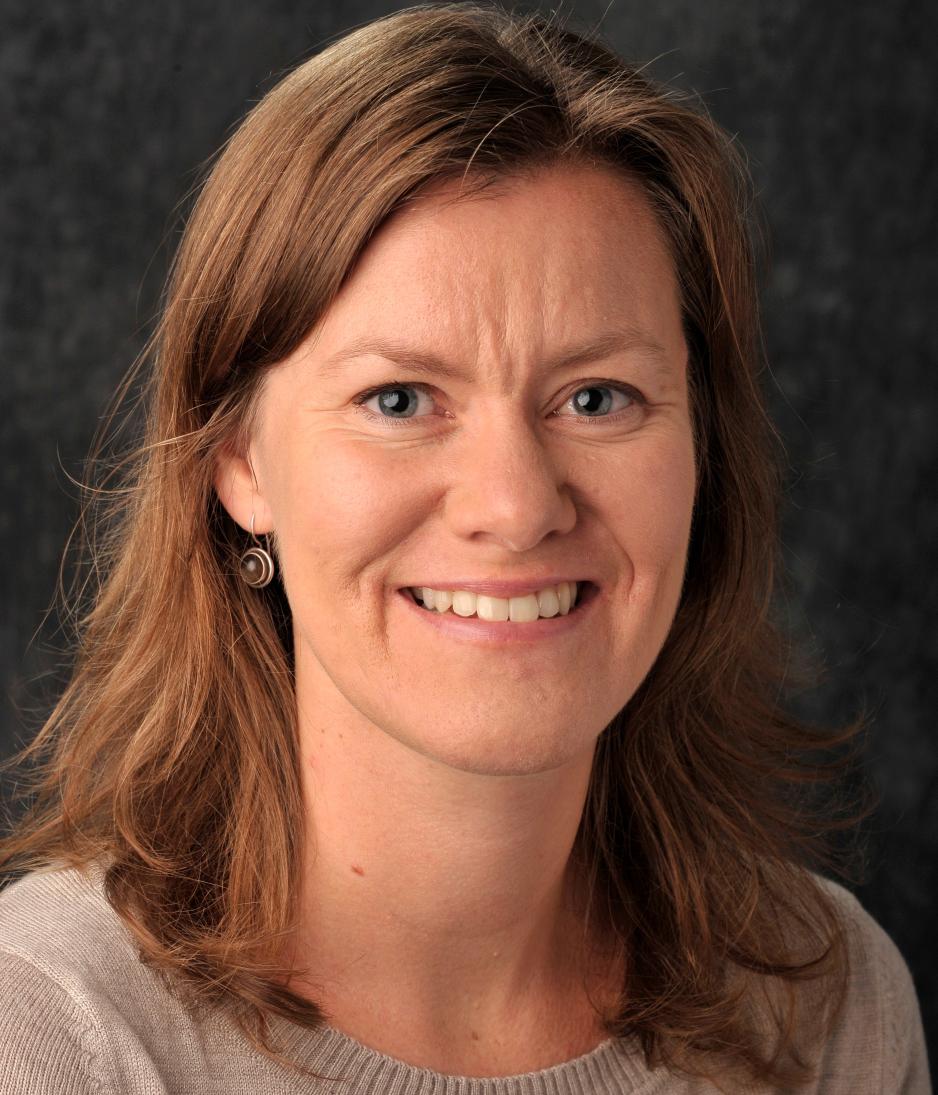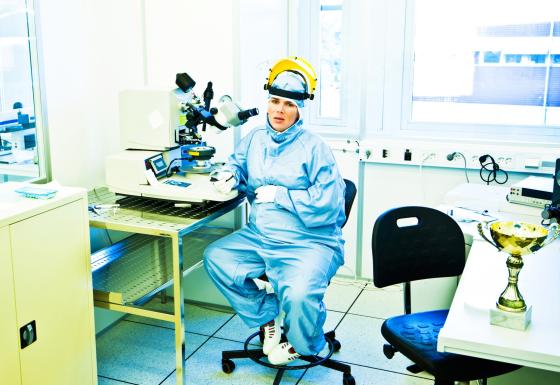Working in academia can be an “extreme sport”
Round after round of temporary hiring and a non-stop pursuit of excellence and funding may impair progress towards gender equality in academia, according to research conducted at the University of Oslo.
The conventional advice on building a career in academia emphasizes tenacity, perseverance and independence. A research career is to be merit-based and gender equal.
Cecilie Thun recently published two articles in which she questions the so-called ideal academic career. Gender, age, phase of life and family planning in one’s thirties all lead to gendered consequences unfavourable to women, she finds.
Thun is an Associate Professor at the Faculty of Education and International Studies at Oslo Metropolitan University. Recently she published the articles Academic career as “extreme sport”: Temporary positions in a gender perspective (in Norwegian) and Excellent and gender equal? Academic motherhood and “gender blindness” in Norwegian academia. The articles are based on a study of careers and families among researchers and staff in the Faculty of Mathematics and Natural Sciences (Matnat) at the University of Oslo (see fact box for more about the study).

The allure of research makes up for temporary status
Citing qualitative interviews with academic, administrative and management employees in the Matnat faculty, Thun identifies temporary positions, demands for international mobility and excellence and increased competition for funding and permanent positions as structural factors that can have gendered consequences. Factors such as these can pose obstacles to gender balance and gender equality in academia.
Thun likens an academic career to an extreme sport.
“Extreme sport is a way of summarizing the finding that academics are required to show stamina. They must persevere and be willing to accept a series of temporary positions after completing a doctorate. This causes both short-term and long-term insecurity. The short-term concern might be whether you will still have a job and salary after a certain period. Long term, you wonder if the effort you put into many short temporary contracts will ever lead to a permanent position at all, or at least to something more permanent.”
Some of her informants did not know what would happen in their careers when their post-doctoral positions expired. They found it very stressful to deal with this uncertainty.
“In post-doctoral positions there is little follow-up devoted to career advancement. Many people spend much of their free time applying continually for grants or positions,” she explains.
“Of course, there are financial ramifications for the people involved, but there’s also the feeling of putting in a huge amount of work and still not knowing if it will lead to anything in the long run.”
“Research is also a type of work that is ‘seductive’. Many are very interested in what they are doing and feel strongly motivated to push hard and keep discovering more in their field. That makes people choose to stick it out,” Thun adds.
Different expectations for mothers and fathers in academia
For many researchers, establishing their career coincides with the phase of life in which they are starting a family. Living up to the career ideals can be challenging, with stringent demands to constantly seek prestigious projects, publish frequently and be internationally mobile while combining all that activity with family planning, children and family life.
“The balance between research and family can be challenging for men too, of course, and it also matters how each researcher’s family life is organized, but my focus has been on gendered expectations in the organization,” Thun emphasizes.
During her work on the research project she was surprised to discover the many gender stereotypes that still exist in academia, and she believes such stereotypes have gendered consequences unfavourable to women and mothers.
“Persistent gender stereotypes emerge very clearly in the data collected. The researchers described different expectations for women and men for things like picking up kids at day care and having the time to participate in evening events.”
A frequent comment by informants was: “If a male colleague picks up his children from day care two days a week, he is an equality hero, but when women do the same, our commitment to the research is questioned.”
Competition pervades the “ideal career” in academia, with demanding requirements to apply for prestigious projects one after the other and publish frequently while being internationally mobile and active in networks.
“Family responsibilities quickly get squeezed. Being internationally mobile and having ‘unlimited’ work capacity can be harder when you have young children.”
“Many of your findings confirm things we already know about the field. Did you find something that was very surprising to you?”
“While a lot of it is known from before, I often feel surprised, especially by such stereotypes. Even though I have worked in gender research for a long time, I keep thinking we have come further than this in Norway, but that is not necessarily the case.”
Combatting gender stereotypes requires a prolonged effort, and not just isolated measures, Thun believes.
Need to safeguard the Norwegian welfare model
Many people have learned by experience that a successful academic career requires working far beyond ordinary office hours. There is, however, some flexibility about when those work hours take place.
“The mothers in the sample are especially appreciative of the flexibility. But the downside is a culture with no time boundaries and ever-increasing demands as to what defines ‘the excellent researcher’,” says Thun, adding:
“The researchers have to compensate by working in the evenings, at the weekends and on holidays.”
Many of the international researchers she interviewed pointed to the Norwegian model as attractive. The ability to combine family with an academic career had been a decisive factor in their choice of Norway as a place to work.
“The fact that it’s possible to leave at four o’clock to pick up your children at day care was cited as something special. This is a finding in itself, and shows that this sort of work and family culture is something important to preserve. This is good for both women and men in academia,” says Thun.
Of particular importance to international researchers in Norway are parental leave schemes and day-care services.
“But they can be an excuse for inaction, since the organization is not forced to examine its own culture.”
“But how can academia restructure itself as organization and employer to create a better climate for researchers with family duties?”
“Part of the problem is that academia in Norway does not exist in a vacuum. It is an international sector with keen international competition. The Norwegian model of work-life balance is not as widespread in other countries.”
“After working through all these career bottlenecks, the researchers who remain are the best ones, according to the meritocratic mindset. But to me, when the structural factors are brought into focus, it looks as if we may be losing many of the best,” she says.
The battle for talent
Many of the women Thun interviewed were leaders in their field. They were ambivalent to gender balance measures, preferring not to be thought of as women first and researchers second.
“The informants wanted to be role models for younger women academics. They had felt a set of expectations pigeonholing them as ‘women researchers’ and wanted to help women researchers of the future avoid that experience,” Thun says.
“Nevertheless, we cannot pretend that gender differences do not exist,” Thun emphasizes.
“The ideal academic career with a linear career path represents a traditional gendered norm that takes no account of the trouble balancing time in the child-rearing phase of life. The women in my study, however, describe an ‘ideal’ career path where the academic ladder must be climbed relatively quickly, with limited time for interruptions for childbirth and leaves of absence. They also point out that gender stereotypes are encountered by women whether they have children or not. By focusing on academia as an organization, as I have done in my study, I have found some ‘blind spots’ where seemingly gender-neutral circumstances can have gendered consequences.”
Some informants had worked for periods outside the university in the institute sector as a more stable alternative and temporary relief from the insecurity.
“Many of these researchers have expertise that’s in demand and can easily get other jobs if they leave academia. But then academia loses that extremely high-level expertise,” Thun explains.
Translated by Walter Gibbs and Carol Eckmann.
Cecilie Thun’s study was part of the Female Researchers On Track project (FRONT) with funding from the Research Council of Norway’s Programme on Gender Balance in Senior Positions and Research Management (BALANSE).
FRONT was a collaborative project between the Faculty of Mathematics and Natural Sciences (Matnat) and the Centre for Gender Research (STK) at the University of Oslo. The project focus was gender equality among employees and cultural development for gender balance at Matnat.
Thun was employed as a post-doctoral fellow at STK and affiliated with FRONT from 2016–2018 through her post-doctoral project. Data collection within the Matnat faculty took place between April 2016 and January 2017.
During this period Thun collected data consisting of 33 semi-structured qualitative interviews:
- 24 interviews with women academic employees at 7 departments within Matnat and 9 interviews with key administrative and management employees (both women and men) in the faculty and in the University of Oslo’s central offices.
- 10 of the women academic employees in the study were temporary employees (post-doctoral fellows and researchers) and 14 were permanent employees (associate professors and professors).
- There were 16 Norwegian and 8 international researchers in the sample.
Thun published three articles based on the data collected. Two are mentioned in the interview and the third is: Thun, C. (2018) The burden of gender: Gendered organizational culture within science, Journal of Gender Research (in Norwegian).
Statistics
In 2009, 20.6 percent of people in senior academic positions were women, while in 2018 women comprised 31.1 percent of senior lecturer positions and professorships.
The university and university college sector has been characterized by a high proportion of temporary staff. Among employees in teaching and researcher positions, the proportion engaged on a temporary basis fell slightly, from 20 percent to 17 percent, between 2009 and 2018. Research fellowship-holders and other short-term positions have been excluded.


